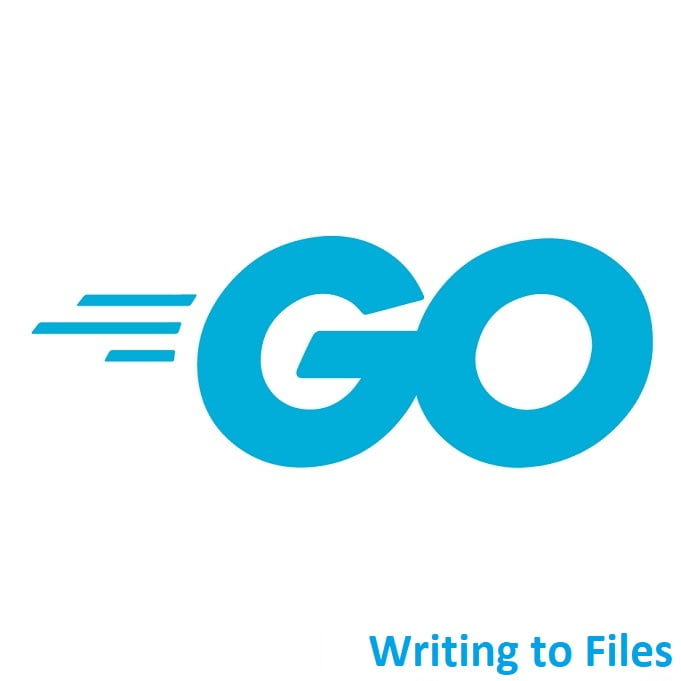
Effective File Writing Techniques!
Welcome to the world of Golang! Writing data to files is a critical aspect of many applications. In this guide, we’ll explore the os and bufio packages, best practices, and error-handling techniques for file writing in Golang. From simple text files to structured data formats, learn how to efficiently manage and manipulate file output in your Go programs.
Creating and Opening Files
os.Create, os.Open, and os.OpenFile:
These functions from the os package are used to interact with files.
os.Create: Creates a new file. If the file already exists, it truncates it.os.Open: Opens a file for reading.os.OpenFile: Provides more control over file opening, allowing you to specify flags like read, write, create, append, etc.
Writing Text to Files
WriteString and Write:
Methods of the File type in GoLang used to write text to files.
WriteString: Writes a string to the file.Write: Writes bytes to the file. It takes a byte slice ([]byte) as an argument.
fmt.Fprintf:
A function from the fmt package that formats data according to a format specifier and writes it to an io.Writer. It’s used for writing formatted text to files.
Writing Structured Data:
Encoding Packages (encoding/json, encoding/xml, encoding/csv, etc.):
These packages provide functionalities to encode Go data structures into respective formats (JSON, XML, CSV) and write them to files.
encoding/json: For JSON encoding and writing.encoding/xml: For XML encoding and writing.encoding/csv: For CSV encoding and writing.
These concepts collectively cover the basic operations involved in writing data to files in Golang, whether it’s plain text, formatted output, or structured data like JSON, XML, or CSV. Understanding how to create, open, write, and encode data for file output is fundamental to effectively manage file writing operations in your Go programs.
Error Management:
Error Checking:
Always check for errors returned by file operations to ensure they executed successfully. Golang often returns errors as a second return value from functions.
For Example:
file, err := os.Create("example.txt")
if err != nil {
// Handle the error, such as logging, returning, or further actions
log.Fatal(err)
}
defer file.Close() // Defer closing the file until the surrounding function exits
Deferred File Closure:
Use defer to ensure that the file is closed after performing write operations, guaranteeing that the file is properly closed even if an error occurs during writing.
For Example:
file, err := os.Create("example.txt")
if err != nil {
log.Fatal(err)
}
defer file.Close() // Deferred file closure
// Write operations to file
Buffering and Performance
bufio.Writer:
Use the bufio package to create buffered writers, which can improve the performance of writing large amounts of data to files by reducing the number of system calls.
For Example:
file, err := os.Create("example.txt")
if err != nil {
log.Fatal(err)
}
defer file.Close()
writer := bufio.NewWriter(file) // Create a buffered writer
defer writer.Flush() // Ensure any buffered data is flushed before closing
// Write operations using writer
Error handling ensures that your program gracefully handles unexpected scenarios, preventing crashes and ensuring that you’re aware of any issues that might arise during file operations. The defer statement helps maintain clean and predictable code by deferring actions until the surrounding function exits, which is particularly useful for closing files after operations.
Buffering with bufio.Writer can significantly improve performance when dealing with large write operations, as it reduces the number of underlying system calls by batching write operations together before flushing them to the file.
Implementing these best practices ensures your file operations in GoLang are robust, efficient, and resistant to potential errors.
Concurrency and File Writing:
Goroutines for Concurrent Writing:
Utilize Goroutines to handle concurrent file write operations. Goroutines are lightweight threads that enable concurrent execution without the overhead of traditional threads.
For Example:
// Example demonstrating concurrent file writing with Goroutines
for i := 0; i < 10; i++ {
go func(i int) {
// Perform file writing operations here
// Ensure proper synchronization and error handling
}(i)
}
Synchronization:
Implement synchronization mechanisms such as channels, mutexes, or other coordination techniques to ensure safe access to the file by multiple Goroutines simultaneously.
For Example:
var mutex sync.Mutex // Inside Goroutine: mutex.Lock() // Perform file writing operations mutex.Unlock()
Appending Data to Files:
os.OpenFile in Append Mode:
Use the os.OpenFile function with the appropriate flags to open a file in append mode, allowing you to add data to the end of an existing file without overwriting its content.
For Example:
file, err := os.OpenFile("existing.txt", os.O_APPEND|os.O_WRONLY, 0644)
if err != nil {
log.Fatal(err)
}
defer file.Close()
// Write operations to append data to the file
Concurrency in file writing involves leveraging Goroutines to perform multiple write operations simultaneously, which can significantly improve performance in scenarios where multiple data chunks need to be written concurrently.
Appending data to files without overwriting existing content is essential when you want to add new information to a file without erasing its previous contents. Using the os.OpenFile function with the appropriate flags allows you to open a file in append mode, enabling safe appending of data to the end of the file.
When implementing these advanced file writing techniques, it’s crucial to handle synchronization carefully to prevent data corruption or race conditions when multiple Goroutines are writing to the same file concurrently.
Golang Code Example
Here’s a basic example of how to create and write to a file:
package main
import (
"bufio"
"fmt"
"os"
)
func main() {
// Define the file path.
filePath := "example.txt"
// Create or open the file for writing. The file will be created if it doesn't exist.
file, err := os.Create(filePath)
if err != nil {
fmt.Println("Error creating file:", err)
return
}
defer file.Close() // Close the file when we're done.
// Create a bufio writer for efficient writing.
writer := bufio.NewWriter(file)
// Write data to the file.
data := "Hello, World!\n"
_, err = writer.WriteString(data)
if err != nil {
fmt.Println("Error writing to file:", err)
return
}
// Flush the writer to ensure everything is written to the file.
err = writer.Flush()
if err != nil {
fmt.Println("Error flushing writer:", err)
return
}
fmt.Println("Data written to file successfully!")
}
Breaking Down the Code
- We import the necessary packages:
bufiofor buffered writing,fmtfor printing messages, andosfor file operations. - We define the path to the file we want to create or write to (
example.txtin this case). - We create the file using
os.Create(filePath). This function returns a file descriptor and an error. We check for errors and defer closing the file to ensure it’s closed when we’re done. - We create a
bufio.Writerfor efficient writing to the file. This helps improve performance when writing large amounts of data. - We write the data (in this case, “Hello, World!\n”) to the file using
writer.WriteString(data). Again, we check for errors. - After writing, we flush the writer using
writer.Flush()to ensure all data is written to the file. - Finally, we print a success message.
Conclusion
Effectively writing data to files is crucial for persisting information in Golang applications. Make sure to handle errors appropriately in your code, and don’t forget to close the file when you’re done with it to release system resources. Armed with the knowledge of different file writing techniques, error handling practices, and advanced strategies, you’re equipped to manage file output efficiently in your Go programs.
That’s All Folks!
You can find all of our Golang guides here: A Comprehensive Guide to Golang




